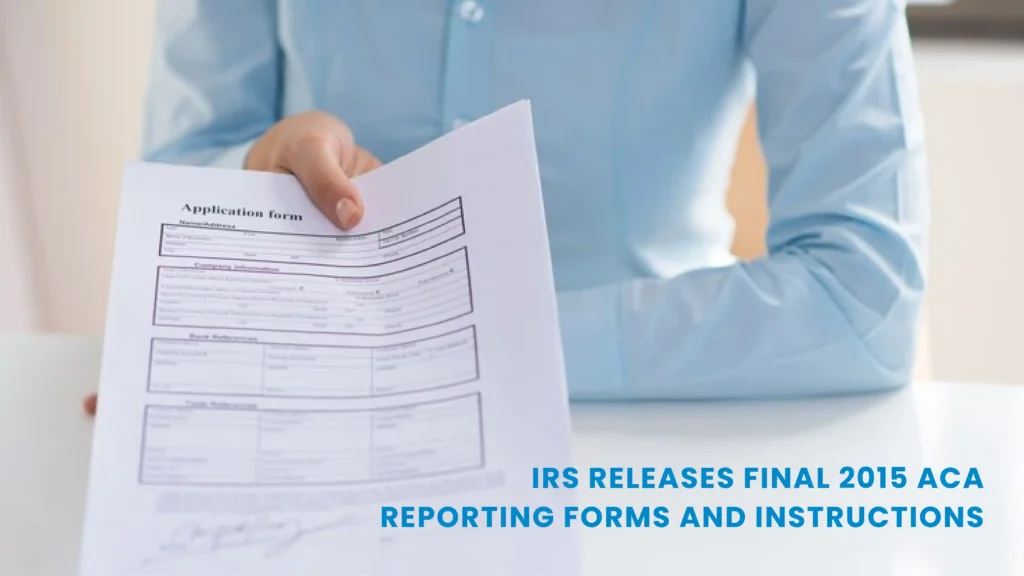IRS Releases Final 2015 ACA Reporting Forms and Instructions
October 13, 2015

Written by IRIS TILLEY (Barran Liebman LLP) – 9/22/15
As many employers are all too aware, ACA reporting has been looming on the horizon for some months now. However, preparations have been exceedingly difficult because employers have been left only with draft forms and outdated instructions as a framework for their planning. On September 17, 2015, the IRS finally remedied this situation by issuing final reporting forms and instructions for 2015. While these final forms and instructions are filled with typical IRS minutia, we have summarized the top takeaways here (along with a little background information to set the stage).
- What is ACA reporting, and does it matter to my company?
Today, references to ACA reporting relate to a set of forms the IRS is using to enforce the tax penalties under the ACA. This reporting is separate from and in addition to the IRS’s mandate that larger employers report the cost of some health coverage on employees’ Forms W-2. Instead of reporting only the cost of coverage, this reporting is used by the IRS to determine which employers are offering health coverage to their full-time employees and which individuals had health coverage in a given year. Through the reported information, the IRS plans to enforce the individual mandate, which requires individuals to maintain health coverage or pay a tax, and the employer mandate, which penalizes applicable large employers (ALEs) who do not offer health coverage to a sufficient number of their full-time employees or offer coverage that is either unaffordable or insufficient. Employers with an average of 50 or more full-time and full-time equivalent employees on business days in the proceeding calendar year (i.e., applicable large employers or ALEs) and all employers with self-insured plans are required to report. For the upcoming reporting cycle, this means that employers with a sufficient employee count in 2014 have an obligation to report information related to the offers of health coverage they made to full-time employees in 2015. Employers with insured plans are not required to report whether an employee or his or her dependents actually enrolled in coverage; that information is left up to the insurers to report. ALEs with self-insured plans will report both offers of coverage and enrollment information. Smaller employers with self-insured plans will only report actual enrollment. - Isn’t the IRS going to delay this reporting again?
No, the IRS is not likely to delay reporting again. It has stated that it will not impose penalties where an employer makes a good faith effort to comply, but the IRS’s affirmative step in releasing final forms and instructions signals that employers will not see an additional delay in reporting requirements. - When are the forms due?
The forms are due in early 2016 for offers of coverage made in 2015. Employers will distribute Form 1095-C to employees on a W-2 schedule, which is February 1, 2016 for 2015 forms. Form 1094-C is a transmittal form which will not go to employees but which will go to the IRS. Both Forms 1094-C and 1095-C will go to the IRS on the same schedule in February or March of 2016, depending upon whether the employer or insurer files the forms electronically. - Are the final forms different from the draft forms?
A few boxes have been moved around from their positions on the draft forms, but the final forms are not substantively different than the draft forms. - What do the final instructions do with HRA Reporting?
The final instructions clarify that employers sponsoring both an insured major medical plan and a health reimbursement arrangement (HRA) do not need to issue separate forms for each of these offerings. The prior instructions indicated the opposite. - Do I really need to report COBRA offers of coverage?
Whether COBRA is a reportable offer of coverage depends on whether an employee has terminated employment. Where an employee has terminated employment, the final instructions clarify that an employer would not report that it had offered coverage to an employee in a given month based solely on COBRA coverage. However, where an employee is an ongoing employee who lost health coverage due to a reduction in hours, COBRA would be reported.
